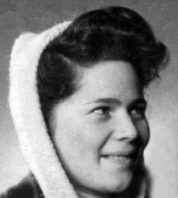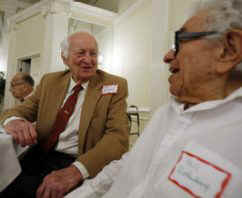Click Here to Return to
Home Page
Leadership Metro Richmond, a regional leadership development and service group, has announced its 2011-12 board of directors officers and members. All are graduates of LMR and started their terms July 1.
Neil Kessler, a partner with Troutman Sanders LLP and a member of the LMR Class of 1995, will serve as chairman of the board...
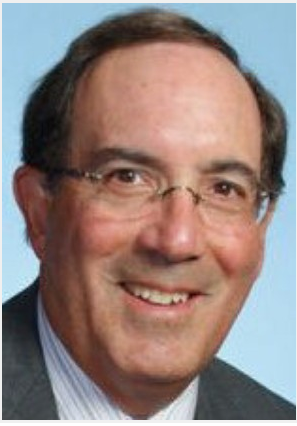
Richmond
Times-Dispatch - 8/6/2011
"LMR announces new officers, members
Leadership Metro Richmond, a regional leadership development and service group, has announced its 2011-12 board of directors officers and members. All are graduates of LMR and started their terms July 1.
Neil Kessler, a partner with Troutman Sanders LLP and a member of the LMR Class of 1995, will serve as chairman of the board.
Scott Blackwell, director of human resources at Williams Mullen and a member of the Class of 2007, is chairman-elect and also will serve as chair of recruitment and selection.
Julie Joyce, vice president and human-resources director of InSource Solutions and a member of the Class of 2002, is immediate past board chair.
Stephanie White, vice president of talent and leadership development at MeadWestvaco and a member of the Class of 2009, will serve as secretary and governance chair.
Don Garber, chairman of the board of Kjellstrom & Lee Inc. and a member of the Class of 2000, will be treasurer and finance chair.
LMR's executive committee also includes Jill Hoover, Renee Johnson, Amy Nisenson and George Welch. New board members, who will serve three-year terms, are Tracy Applewhite, Charlie Donato, Rob Jones, Trina Lee, Randy Silber and Jim Watkins.
Since LMR was founded in 1980, more than 1,800 Richmond-area residents have graduated from the program. Participants attend classes to learn about regional issues and conduct community-service projects."

The Tee Jay Cadet Corps &
Band existed from 1942 to 1971. For about 3 years, there has
been a TJHSCC Alumni Band - playing at churches, nursing homes, retirement
homes, class reunions, etc. There are musicians from each decade in the
band - with five from the 1950s. Ernie Huband, Captain of the Band in
1953, is President of the Alumni Band.
On April 29th, the Alumni
Band will be playing a concert at the Byrd
Theater as a fund-raiser
for the "Byrd Theater Foundation." The concert will
begin @ 7:00 p.m. -
with Jody Weaver - Yuhase playing the Byrd Organ during the
program. (Almost everyone who lived in Richmond remembers her
Dad, Eddie Weaver, who played at Lowe's, Miller & Rhoads Tea Room and
the Byrd Theater - with Jody sometimes playing with him.)
While the price has not been confirmed, it is believed the
tickets will be some[where] in the $5 - $10 range. Now, you've
gotta admit - that's a bargain, Folks.
As Ernie wrote to his '53 Classmates - "Rest assured
that you will hear us blast out Jeffersonian!"
We hope you will come - and bring someone with you - not
only to support the Alumni Band, but to support the Byrd Theater
Foundation.
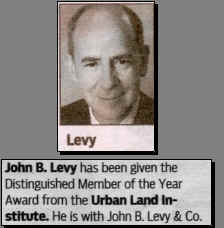
Richmond
Times-Dispatch...12/13/2010

Your
friends Cheryl Sporn Gross and hubby William K. Gross are singing in
this once-in-a-lifetime event at Carnegie Hall on Sunday
Oct. 31 at 3:00 pm! Call
(212/677-4144) or email us through the TJ link above ASAP if you'd
like tickets!!
HAPPY
50TH ANNIVERSARY TO THE ZAMIR CHORALE!!!!
Larry
Creeger was the guest speaker on blog Talk Radio (www.blogtalkradio.com/keithbroaders)
on Tuesday night March 23rd from 9pm till 10pm est. The subject was
the launching and implementation of the National Constitution Plaque
Initiative as well as it’s important mission and dynamic way it reaches
out to America’s children.
Click
here to listen to the mp3 recorded show
Round the World Trip Scheduled to start November 21st
Classmate, Marion Crawford, travels! - check out her blog here:
http://www.ramblinme.blogspot.com/
Jack
Greer has completed a novel, Abraham’s
Bay & Other Stories. It is mostly set at sea or
in a far-away ports in the Bahamas, the Dominican Republic, the Caribbean,
Belize and the Yucatan. The stories are largely based on characters
his wife and classmate, Bobbie Jean PACKER, and Jack met during some of
their sailing adventures.
Steve Budnick's son, Scott, is the Executive Producer of the hit movie
The Hangover. Steve and two friends went to the premiere in Los Angeles on
June 2.
Check out the pictures - click here
Re: JACK GREER and his book, "Abraham's
Bay & Other Stories"
I wanted to let you know that I'll be giving a reading at
the University of Richmond at noon on October 16, 2009 (at the U of R
bookstore). I would love to see all my TJ classmates that I missed at
the reunion!...Cheers -- Jack
The MidWest Book Review called it "a fine collection
of short fiction" and "a top pick for those seeking fiction with an
oceanic focus."
The Montserrat Review said the "stories reflect the
important insight that the dramas here are not so much Man vs. Nature, but man
(or woman) in conflict with his or her own inner workings.... I highly
recommend 'Abraham's Bay & Other Stories' for your summer reading
list."
John Wennersten, author of "The Oyster Wars"
and other books about the Chesapeake Bay region, said, "I would rate this
as one of the best books of short stories that I have read in years."
A number of stories that appear in the book won awards
from the Maryland State Arts Council for short fiction. (The book is
from Dryad Press, and can be purchased online at Amazon, Borders, Barnes &
Noble, etc.)
The characters in Jack Greer's Abraham's Bay & Other Stories
have set sail for islands in the Atlantic and Caribbean — some are restless,
some curious, others are unhappy, while others are in love with roaming.
Inevitably, these small boat sailors haul their personal histories along,
their hubris, their failures, and their frustrations. Some sail alone, others
are looking to reunite, while others are parting for good. Rather than
record-breaking feats of circumnavigation, the stories of Abraham's Bay
dramatize ordinary struggles with self and sea, where the protagonists often
seem to exist at the edges of the larger world.
In "Starting from Beaufort" a young couple is roiled with
tensions as they ready themselves and their sailboat for their first venture
into the Atlantic. In the title story, "Abraham's Bay," cardiologist
Dan Bernstein, sailing among the islands by himself, is stranded one night and
confronted by a menacing islander who forces him to defend his life choices.
In "Souvenir's Last Passage," Nan Gray, in her sixties, faces a
hostile boarding in the dead of night, and the nagging certainty that her
husband is beginning to lose his memory and his mind.
Read
"Souvenir's Last Passage."
Nearly all storytelling is about people setting out on journeys and
encountering conflicts along the way — the compelling storyteller gives us
insights into their character and brings us into their conflicts and struggles
to resolve them. Jack Greer is a compelling storyteller — his lean narrative
style is graceful and exact, anchored in a sailor's competence that is always
attentive to the sea and its beauty but also alert to its dangers
Jack Greer has spent most of his life on or around the Chesapeake
Bay, having worked as a boat builder and, in his younger years, as a sailing
instructor. He and his wife, Bobbie, live on the shores of the Chesapeake Bay
in Edgewater, Maryland. They sailed their 31-foot Vindo sloop as far north as
Newport and Block Island and as far south as the Dominican Republic. A poet
and fiction writer, Greer has won two Individual Artist Awards from the
Maryland State Arts Council, while another story won the annual Baltimore
Artscape competition. He is a senior writer on marine science and policy for
the University of Maryland Sea Grant College; for this work, he has been
awarded two citations from the Governor of Maryland and a President's award
from the University of Maryland Center for Environmental Science. Among his
literary publications are America
and Other Poems (Dryad Press).
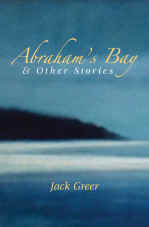
Re:
SUZANNE SMALL WOLSTENHOLME (also
see May 29, 2006 news article at bottom of this page)
Palin stops briefly at Ashland caterer
She and her husband talk business with owners of Homemades
by Suzanne
Tuesday, Oct 28, 2008 - 12:09 AM
TIMES-DISPATCH STAFF WRITER
The women in the Kappa Alpha Theta sorority at
Randolph-Macon College arrived early yesterday to get a glance at Sarah Palin,
the Republican vice-presidential nominee, as she made a quick visit to
Ashland.
"We've never had a chance to see a candidate
before," said sorority sister and College Republican Bethany Floyd of
Belle Haven in Accomack County. "It's awesome."
Continuing a campaign theme emphasizing low taxes
and entrepreneurship, Palin made a 30-minute stop at Suzanne the
Sandwich-Maker's shop, better known as Homemades by
Suzanne, on Railroad Street in downtown Ashland. Palin's caravan was en
route from Fredericksburg to Salem.
As a rain-soaked crowd of about 500 people waited
across the railroad tracks outside, Suzanne Wolstenholme
and her two partners in the gourmet deli and pastry business, Sheila Clarke
and Kimberly Mills, sat around a table with Palin and her husband, Todd, and
talked business.
"This country has had hard times before and
grown and prospered," Palin said. "We cannot rely on government
taking money from you."
Since a chance encounter by Democratic
presidential candidate Barack Obama with a Toledo, Ohio, man who has become
known as "Joe the Plumber," the campaign of GOP presidential nominee
John McCain and Palin has been attacking Obama as a would-be socialist who
wants to redistribute wealth.
The Republicans have been attacking an Obama plan
to raise the tax on individuals and businesses that make more than $250,000 a
year. This would stifle economic growth, they say.
Wolstenholme said her business, which is
well-known in the Richmond area for its gourmet-style foods, does not make
$250,000.
She described Palin as "a very caring, very
smart woman. She spent a lot of time listening to us."
Wolstenholme said the business has held up well,
despite the economic downturn.
"We have made some adjustments," she
said, adding: "People can always afford a chicken-salad sandwich."
Palin emerged from the shop holding aloft a
Randolph-Macon sweat shirt, a gift from someone inside.
An aide emerged with another prized possession --
a platter of sandwiches, cheese balls and other fixings for the riders of
Palin's bus, labeled the "Straight Talk Express."
Contact Tyler Whitley at (804) 649-6780 or twhitley@timesdispatch.com.


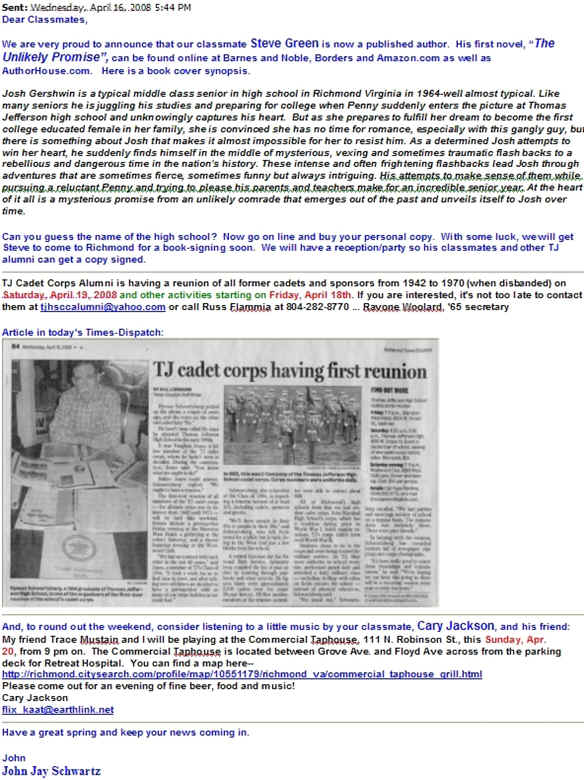
Holocaust survivor Esther Kutner dies
Richmond resident had been held at Auschwitz;
she later escaped Nazis
RTD - Saturday, Dec 29, 2007 - 12:09 AM
By ELLEN ROBERTSON
TIMES-DISPATCH STAFF WRITER
Esther Talkowska Kutner was a 12-year-old Jewish girl when
the tanks of Nazi Germany rumbled into her hometown of Brezny, Poland, in
September 1939.
She found their presence, which shook the walls of her home,
exciting.
She little realized the soldiers they transported would
dismantle her world.
Uncertainty replaced the security of home as the Nazis
crowded Esther, her widowed mother, brothers Lemel and Nisan and sister Rivka
with other Jews into a ghetto surrounded by fences and guards.
After German soldiers cut off her beautiful long braids for
amusement, her mind railed that she had suffered the worst thing that could
happen to her
She was terribly wrong.
In 1941, the Nazis uprooted her family to a ghetto in Lodz,
Poland. There, the Nazis demanded custody of the youngest Jewish children,
saying they would be sent to a children's camp and treated well.
She equipped her 6-year-old brother Nisan with a little
knapsack, made him promise to write each week and delivered him to the
Germans. She learned after World War II that he was immediately gassed to
death.
When her camp closed in 1944, she and her family were herded
into cattle cars, where they traveled starved and dehydrated.
At their destination, "I saw strange buildings at the
end of the world," she told journalism professor William Ruehlmann in the
1970s. As he related their conversation during a speech Dec. 9, he quoted her
saying, "I thought to myself, 'Dear God. Is this where we're going?' It
looked like hell."
It was Auschwitz, where Dr. Josef Mengele, the Nazi
physician who would personally select 400,000 people to die, awaited them on
the platform.
"With a twist of his thumb, I was pointed in this
direction and the rest of my family was pointed in that direction. I never saw
my family again," she told Ruehlmann.
She became one of "Mengele's children," young
human guinea pigs who suffered unspeakable medical atrocities as the doctor
experimented to develop a pure Aryan race.
She suffered interminable roll calls where Nazis counted
heads, recalling especially a pre-dawn call-out where her bare feet began to
freeze on the ice and snow-blanketed ground. She balanced on her right leg and
lifted her left foot to protect it. Her right leg froze up to the hip and
turned black. The flesh split open, exposing green, infected bone.
The right leg healed shorter than the left. Pain in both
legs troubled her the rest of her life.
She also bore a deep scar where her flesh opened from
malnutrition.
A year later, with the war's end near and the Allies closing
in on the German camps, the Nazis set the Auschwitz inmates on a death march
by night to Germany to eliminate witnesses to their atrocities. "If you
couldn't walk, they would kill you," she recalled.
She was having trouble walking. Rather than suffer death by
a Nazi bullet, "she decided she wanted to die on her own terms,"
said her daughter, Fay Kessler of Henrico County.
One night, she led a four-woman escape into the woods during
a snowstorm. They ran and hid for days.
American soldiers found her on a road in Germany, looking
like a little skeleton, Ruehlmann related.
She recuperated in an American military hospital, where
doctors saved her frozen left leg from amputation.
In 1946, Esther married fellow Holocaust survivor Leo Mayer
Kutner, whom she met in a displaced persons camp in Germany. They immigrated
to Richmond in 1949 with their young son Benjamin, now of Glen Allen. Two more
children, son Lee Kutner of Henrico and her daughter Fay followed, as did four
granddaughters.
She lost a granddaughter to cancer in 1995. Her husband died
in 2002.
Though the Holocaust robbed her of much that was dear, its
horrors failed to dislodge "her firm belief in the goodness of
humanity," Kessler said.
For two decades she would not talk about her experiences.
"She wanted to protect us. Not only didn't she want us to feel her pain,
she didn't want to raise us to hate," Kessler said.
Then she opened up, bearing her witness to hundreds of
military, college, civic, church and school groups. She championed Holocaust
education.
She devoted energy to politics, PTA boards and Jewish
groups. She volunteered at hospitals and preschools. She cooked and did
laundry for sick neighbors.
The pain of her early life never abated. "I have not a
single picture of my family," Esther told Reuhlmann. "Good Lord,
what wouldn't I have given for just one.
"When my oldest son got married, I did not know what
was making me cry. I was weeping uncontrollably, and I was thinking: Mom is
not here. This is the legacy of war." She suffered nightmares all her
life -- until dementia set in two years ago. "My oldest daughter told me,
'If anyone on earth deserves to lose her memory, it's Nana,'" Kessler
said. "'By losing her memories she can have peace and not be tortured by
the memory of the past.'"
Esther Talkowska Kutner died on Sunday, her 81st birthday.
She was buried in the Beth El section of Forest Lawn Cemetery.
"She was always so grateful for the opportunities this
country afforded her," Kessler said. "She would never say anything
directly negative about the United States. It meant too much to her.
'Appreciate what you've got,' she'd tell us. 'You never know when it will
change.'"
At Jewish holidays, when they cooked the special foods,
"my mother and father would reflect on the times when they had nothing
but a potato skin to sustain them." Kessler said. "They would look
at us three children and say, 'You have to understand how much we appreciate
this.' They were so grateful to have raised us in this country."
Contact Ellen Robertson at (804) 649-6115 or erobertson@timesdispatch.com.
Not Exactly our Class, but still TJ:
Class of '38 gets jump on reunion
Friday, Nov 16, 2007 - 12:08 AM
Bill
Bingham (left), Class of '38, chatted with Bill Rotherberg, Class of
'34.
Photo
By: BOB BROWN
By PENELOPE M. CARRINGTON
TIMES-DISPATCH STAFF WRITER
Bill Bingham remembers the first time Thomas
Jefferson High School's football team beat rival John Marshall.
It was 1937. Bingham's senior year. His job was
to sit on the end of the bench and guard the water buckets during the game,
but the win put him in the mix.
"A group of TJ students took the goal
posts out of . . . the stadium and took them all the way down and set them up
in the front yard of the old John Marshall High School," he said. "A
whole bunch of us marched down there and had a big rally. It was a big, big
day."
That palpable sense of school spirit permeated
the din of lively -- and often spicy -- conversation inside the Westwood
Racquet Club's ballroom yesterday. The gathering of about 40 members of the
class that once numbered close to 250 marked the 69½-year reunion for TJ's
Class of 1938.
Franklin D. Roosevelt was president then. The
Glenn Miller Orchestra had students' toes tapping. Future President Ronald
Reagan was a young actor starring in "Brother Rat," a flick about
three buddies at Virginia Military Institute.
Bingham said that years later, Uncle Sam had
his hand on his shoulder and those of other young men called to the Pacific to
fight in World War II.
These old times and ones since resonated among
attendees such as Helen Dulce.
"As you get older, you lose a lot of
people and it's nice to be able to talk with people your age," she said.
Mariam Padgett, who graduated from TJ in 1940
but married a 1938 grad, agreed.
"It's the love of our school and our love
of one another -- the camaraderie. It's fun to remember and we're sorry we're
as old as we are," Padgett said with a laugh. "We'd like to do what
we used to do, but we can't."
Showing off a naughty sense of humor wasn't on
that list.
"I never tell anyone my age, except you
all because you know my age," said Dina Boettcher, a professional
counselor, as she stood to update the laughing group. "I have a daughter
who is going to be 60, and I told her she must be illegitimate because I'm
only 39."
Boettcher, also a sex therapist, said she
decided to retire when people were looking at her and saying, "What does
that gray-haired lady know about sex?"
Others spoke of relatives serving in Iraq and
asked for prayers for their continued safety and return. The request brought a
round of applause followed by class president Aylett "Skee" Goode's
closing remarks.
"Thank God for the fellowship of friends,
and thank God for our longevity," he said.
Then he called on Paul Simpson to lead the TJ
football fight song.
Contact Penelope M. Carrington at (804)
649-6027 or pcarrington@timesdispatch.com.
Progress is measured
one step at a time
Paralyzed a year ago,
ex-football player marks return of some functions
Monday, Jul 23, 2007
-
12:08 AM
By BRANDON SHULLEETA
TIMES-DISPATCH STAFF WRITER
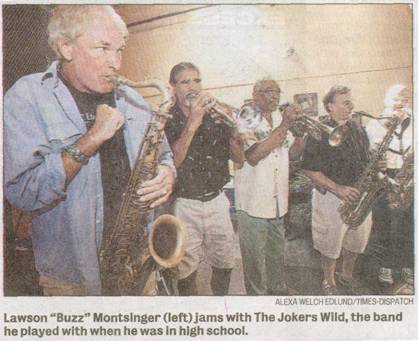
April 30, 2006
, was just another day for
Lawson "Buzz" Montsinger -- until he tripped on a rug, lost his
balance and landed awkwardly on his chin.
The
fall left him paralyzed from his neck down.
He
had no medical insurance.
After
the accident, he was just "a talking head" with no body movement,
daughter Shannon Montsinger said at a gathering yesterday in Richmond, where
family and friends made donations to help cover his medical expenses.
More
than a year of treatment and therapy has yielded progress.
Montsinger,
59, can walk on his own again, though it is a struggle. Standing and sitting are
visible challenges. He credits his progress so far to determination, lots of
praying, and loved ones who drove him to his feet and gave him a new perspective
on life.
The
outlook had been grim after the fall. He said doctors at
VCU
Medical
Center
told him there was a good
chance that he would have little, if any, movement for the rest of his life.
After
spinal surgery, he was released from the hospital in July 2006, and he called on
his first of three ex-wives to take care of him and help him walk again.
He
had been divorced from Beverly
[Glaspie] Montsinger -- who never changed her last name -- for 25 years,
but she agreed to help. The two had an 11-year marriage in their 20s and early
30s and stayed friends after divorcing.
"She
saved my life," Buzz Montsinger said. He said he'd still be "staring
at the ceiling" if it weren't for her and their daughter, Shannon
Montsinger, who is a Richmond-area entertainment consultant.
Other
friends and loved ones offered to help, too, Montsinger said. At a party last
year, more than 500 friends and family members gathered to assist with his
medical expenses.
Yesterday,
friends gathered again to raise money and show their support, at Plant Zero in
Richmond
. Area businesses and
entertainers chipped in, including Big Daddy's BBQ, D.J. Jeffrey "Smitty"
Smith, White House Catering and the Diamond Dolls dance group.
For
the first time in about 40 years, Buzz Montsinger joined some members of The
Joker's Wild, the band he had played with when the members were at
J.R.
Tucker
High School
.
Montsinger
played the saxophone -- a passion he had wondered if he would ever be able to
enjoy again.
In
the 1960s he was a 6-4, 215-pound defensive end for the
University
of
Richmond
football team. He was a
co-captain his senior year. He had a brief stint with the Dallas Cowboys out of
college.
After
football, he played the saxophone for a living, he said, and performed on 20
albums.
Now
his goal is to recover well enough to take care of himself -- and be able to
play the saxophone.
Eventually,
he said, he hopes to visit young hospital patients to tell them to never give up
on life and to continue fighting their injuries.
"It's
given me a good reason to give back," Montsinger said.
He
said the injury has led him to better appreciate the most precious things in
life. Family and friends agreed that what was first seen as a tragedy has
brought them closer together.
Asked
about the gathering for her father, Shannon Montsinger took a reporter's
notebook and wrote her answer: "Give love to everybody -- your family, your
friends. The love you give heals people."
Contact Brandon Shulleeta at (804) 649-6452 or bshulleeta@timesdispatch.com.
Photographer John
Henley:
Richmond
Times-Dispatch
March 26, 2007
Latino Focus
Modeling agency recruits local talent to fill a void
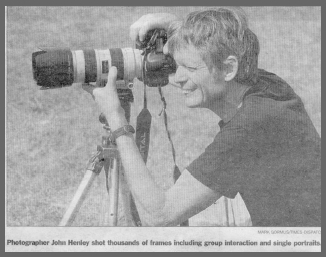
|
BY JUAN ANTONIO LIZAMA
TIMES-DISPATCH STAFF WRITER
|
Mar 26, 2007
|

Juanita Zapata and her mother, Natalia Rivera, pose during a photo
shoot at Lewis Ginter Botanical Garden.
MARK GORMUS/TIMES-DISPATCH
|
|
Ben Alonso met Natalia Rivera and her 7-year-old daughter on a sunny
afternoon earlier this month at the Lewis Ginter Botanical Garden.
Five minutes later, the strangers were sitting on the green grass in an
open field, laughing, cuddling, reading and having a picnic as a happy family.
The three natives of Colombia were part of a group of Latino models posing
for photographer John Henley, who was shooting thousands of frames, freezing
the happy expressions, family walks, group interactions and single portraits.
The photo shoot in Henrico County was the first of at least three planned
by Modelogic Wilhelmina, a modeling agency in Richmond.
The 30 models were selected from an initial Latino casting recently for a
follow-up photo shoot to create a division of local Hispanic talent to meet
the increasing demand from busi nesses and advertising and production
companies, said President Stacie Vanchieri.
Modelogic Wilhelmina focuses on commercial modeling.
The agency's clients range from Jeep and Chrysler to TV and movie
productions to retailers such as Kmart, Circuit City and S&K Menswear.
Vanchieri said she will upload the photo images on a new Hispanic models
Web site for clients and potential clients to see.
"We just have noticed this trend that our clients are requiring more
and more Hispanic talent every year," she said. "No local agency is
focusing on Latino talent, so I thought it might be a good idea to open a
division of Hispanic/Latino models to the market."
For Jackie Bird, chair-elect of the board of directors of the McLean-based
Association of Hispanic Advertising Agencies, the increased demand for Latino
models reflects the growing advertising market nationwide to that community.
That means reaching more than 42 million potential Hispanic customers, the
largest and fastest-growing minority in the country with a buying power
expected to hit nearly $900 billion this year.
Wanting a piece of the big pie, businesses are making sure they are visible
in that market. The Hispanic advertising industry is outpacing all other
sectors of advertising, said Bird, who is the president and chief executive
officer of the marketing company Winglatino.
"In the last four years, the Hispanic advertising industry has tripled
from 1.1 billion to 4 billion," she said from her office in New York.
"If you are targeting the Latino market, you want to represent the Latino
community in the advertising."
For 14 years, Modelogic Wilhelmina has been doing work in print, TV,
broadcasting and industry training videos. About two years ago, Vanchieri
said, she began noticing businesses demanding more Hispanic models.
Until now, when asked for Latino or Asian models, she had to bring in
talent from places such as New York or the West Coast, she said.
"I don't necessarily want to do that anymore. I want to use local
talent," she said.
Realizing that the population in Richmond has become more diverse over the
years, the agency did a couple of casting calls for Hispanic and Asian models
at the office, but no one showed up.
For the last Latino casting earlier this month, the agency and photographer
Ariel Skelley, from Ariel Skelley Photography, worked with Leo Caldas, a
self-employed graphic designer from the Dominican Republic, to get the word
out.
Caldas, who lives in Richmond, spread the word through e-mail, friends and
organizations and suggested that the casting be held in the community because
it would be harder to bring potential models to the agency's office in Church
Hill.
To Vanchieri's surprise, scores of families and some grandparents from a
host of Latin American countries and with many levels of acculturation in the
U.S came to Bodega Latina at 6003 W. Broad St. Modelogic will be recruiting
more models at the Virginia Hispanic Chamber of Commerce's Feria de
Oportunidad (Opportunity Fair) July 21 at Cloverleaf Mall.
"To have 80 to 90 people in a casting is wonderful," Vanchieri
said.
She said she was looking for regular, next-door kind of people.
"We are looking for people with good skin, good teeth . . . a friendly
smile and a friendly face," she said. "We are not looking for high
cheekbones, size 2 and super tall. It's not Vogue magazine modeling, it's
commercial modeling."
Vanchieri said her agency is preferably looking for baby-boomer Latino
models. They are in demand by real estate, banking, communications, insurance
and law-firm businesses, she said. Older models are harder to find.
"People in that age group don't think, 'Oh, I should try
modeling'," she said. "If you are between age 20-25 is good, between
30-60 is great."
Vanchieri was impressed with Rebeca Orsatti, 51, a mother of five children
from Mexico who lives in Amelia County with her husband, the Rev. Louis
Orsatti, pastor of a Hispanic congregation at Branch's Baptist Church in South
Richmond.
"She is beautiful. She is the age we want," she said.
Models make $150 an hour, more for major projects such as billboards.
Ben Alonso, 27, a health-care planner for HIV services at Virginia
Department of Health, said he was happy to be among the models.
"I think in business and other public service announcements, people
identify best with people who look like them," he said.
Alonso said it felt natural to be in an outdoors setting, talking on the
phone and having a picnic.
"Keeping a smile for a long time when nothing is really funny can be a
little difficult," he said. "I need to work on that."
Diana Delcher, 27, who lives in Chesterfield County with her husband,
Chris, came with their 5-month-old son Ian to the photo shoot.
She was paired with Panamanian Marcos Gonzalez, 30, to act as a family
taking a walk in the garden.
"The acting was a little difficult," Delcher, an interpreter,
translator and college student, said.
Delcher, a native of El Salvador, said it is satisfying to know that
businesses are putting more attention to Latinos, she said.
"Now they know that we contribute our part to the economy, and they
have to reach that group," she said.
Greg Simos, director of broadcast production at the Martin Agency, said
that models from different racial and ethnic backgrounds are needed.
Businesses that are not targeting specific markets want to reach people across
the board, he said, and they want such diversity to be represented in their
marketing.
When The Martin Agency has done advertising for clients marketing in
Spanish-language media such as Telemundo or Univision, Latino models and
writers have been hired.
"You can't necessarily just convert English to Spanish," he said.
"The concept doesn't translate as well."
Having to go outside the local market for models and writers incurs
additional expenses for production, Simos said.
"If we had a bigger base to choose from locally, it would be more
cost-effective," he said. Tapping into the local population, "I
think it's not only great for the advertisers, but for the community as a
whole. It builds up the local community for advertisers and for feature
producers who come to town."
Stacy Murphy, executive producer at Park Group, a production company in
Richmond, has been producing commercials for 20 years, nine with her current
employer.
A couple of years ago, Park Group did a bilingual commercial for Donate
Life, she said.
"Often, talent did not come from Richmond," she said.
"Everything had to come out of market or they shot a version in Spanish
in places like Texas."
The company is working with another organ-donor client that wants a
commercial for Asian communities, she said.
"I think that the name of the game seems to be diversity,
diversity," she said. "It's sort of the mantra for every client out
there."
It is key that Vanchieri and her agency is focusing on local talent, she
said.
"There has been a need for Asians and Latinos," she said.
"It's great for her to focus on this."
|
LEE GRAVES
TIMES-DISPATCH COLUMNIST
|
|
As a young sportsman growing up in Richmond, Ellyson
"Elly" Robinson III looked at the Virginia Anglers
Club with stars in his eyes.
Joe Brooks, Bill Gallasch and other angling luminaries gave the club a
certain status.
"I thought to myself, 'Maybe one of these days I'll prove my fishing
ability enough to be invited to belong,'" Robinson said.
That day came in 1977, when boyhood friend John Wycoff sponsored him as a
member. Rubbing elbows with such talented anglers kindled a new ambition, one
that didn't fully catch fire until the early 1980s.
In May 1982 while fishing around the Chesapeake Bay Bridge-Tunnel, Robinson
set three world records, catching a 9-pound, 14-ounce bluefish on 2-pound test
line and two weakfish -- one 11 pounds, 12 ounces on 2-pound test and the
other 13 pounds on 4-pound test line.
"Three world records in a period of two weeks kind of jump-starts you
on a life of light-tackle fishing," he said.
During the ensuing decades, Robinson compiled a long list of angling
achievements that now qualifies him for star status. At the club's annual
banquet next weekend, he will be formally celebrated as a master angler.
"It's an incredible accomplishment," said Bob Shepherd, club
president.
Only five others have made master angler since the club began in 1961. The
founders envisioned it somewhat as a mission impossible.
Freshwater and saltwater species. Leaping fish, deep fish, surface fish,
billfish, big fish, little fish. Plug tackle, spinning gear, fly rods,
artificial lures, the lightest of possible lines and tippets.
"I don't know if anybody, when they first set it up, really expected
anybody to ever achieve it," Shepherd said. "It's a lifetime goal
that's set out there for you to work toward."
Robinson, who is retired after a 35-year career with Dupont, had worked to
within two steps of that goal by last year. He needed a 7½-pound largemouth
bass on plug tackle, as well as a tarpon on a fly rod. Both catches had to
meet strict standards. Arthritis also complicated things, stiffening
Robinson's shoulders to the point he required surgery to replace his left
shoulder in January 2003.
"I was thinking I'd never be able to get master angler because of
physical limitations," he said earlier this week in the trophy room of
his house in Chesterfield County. As he spoke, the dull glow of a mild
midwinter's morning spilled through frames of glass to light a Hemingway-like
haven -- exposed wooden beams, fireplace, mounted whitetail trophy bucks, a
stuffed gobbler, foxes, quail and fish after fish after fish, from molasses
cobia to gleaming African pompano.
As ever with quests, help came in the form of friends. Mike Ostrander, a
club member who operates James River Fishing School, invited Robinson to a
private pond near West Point. They'd come within 2 ounces of landing that
largemouth the year before, and a February day with a cold front looming
provided another opportunity.
"The fishing was red hot," Robinson said.
Most were in the 2- to 5-pound range. Then something a little heftier hit
his Senko worm.
"I said, 'Mike, this really feels good.'"
Robinson battled it to the boat and landed a 7-pound, 12-ounce largemouth,
allowing him to put a critical checkmark on his list.
"There was elation, but the elation was overshadowed by 'How am I
going to catch tarpon on fly? Now I know I've got to invest the time, effort
and pain to get that last fish.'"
Another club member, Glenn Carter, buddied with him to Key Largo in April
for the final leg of the quest. After two dozen casts the first morning,
Robinson caught and released the requisite tarpon on 12-pound tippet.
It was not his most impressive catch, but the competition for that is
stiff, given the seven world records he's held at various times.
Robinson said his three favorite catches are: a world record 33-pound,
8-ounce African pompano caught on 6-pound test line at the Manuela wreck off
the Outer Banks, N.C.; an 11-pound, 15-ounce spadefish hooked on 2-pound test
over the fourth-island tube of the bridge-tunnel (both required more than two
hours to land); and the weakfish catch of 1982 on 2-pound line, a world record
that still stands.
His least favorite?
"I hate surf casting. I can't stand surf fishing," he said.
But with help of fellow master anglers Bill DuVal and Stuart Lee and other
club members, he succeeded.
The cooperative spirit among skilled, diverse anglers guides the Virginia
Anglers Club, Robinson said. And that's what has helped him reach master
status.
"The whole time I've been in the club, I've been able to take
advantage of the expertise that others have," he said. "And you
reciprocate. . . . You can't expect to receive if you aren't willing to
share."
University
of
Richmond
UNIVERSITY
DANCERS TO PERFORM SPRING CONCERT FEB. 22-25
AT
UNIVERSITY
OF
RICHMOND
The
University
of
Richmond
’s University Dancers will present
their 22nd annual spring concert, “Seeking Flight,” with twelve premiere
pieces, Feb. 22–25 in the Alice Jepson Theatre of the
Modlin
Center
for the Arts.
Performances will begin at
7:30 p.m.
on Feb. 22, 23 and 24 and
2 p.m.
on Feb. 25. Reservations are
recommended and can be made by calling the Modlin Center Box Office at (804)
289-8980.
The repertoire for this concert blends many forms of dance including
modern, ballet, jazz, and tap. Daleng
has choreographed a new work “Secrets in the Night” and will be performed to
live music by local musicians Rattlemouth featuring Robbie Kinter, Marc
Langelier, George Lowe and Danny Finney. Ms.
Daleng will perform a tap duet with Michael Whitten, originally choreographed by
the famed Richmonder Bill “Bojangles” Robinson.
Ann Norman Van Gelder, assistant director of dance, has choreographed two
new works for this concert, a trio with music by Henryk Górecki and a piece for seven
of the dancers with music by Francis
Poulenc.
Robert Battle, artistic director and choreographer for the international
dance company Battelworks has created a new piece with a commissioned score also
to be performed by Rattlemouth. Mr.
Battle originally from
Miami
,
FL
is a graduate of the
New World
School
of the Arts and
Juilliard
School
. Mr.
Battle danced with the David Parsons Company for seven years and formed his own
company Battleworks in 2002, which has performed nationally and internationally.
This new work “Boxed” dealing with oppressed women is fast paced and
very physical. Karl Green has created the costumes for this premiere.
With a Quest Grant from the University of Richmond, Andrea Del Conte,
famed New York Flamenco teacher and New York tap artist, Barbara Duffy have
created a Flamenco vs. tap piece for
six of the University Dancers with music by Leon Parker, David Palimeri, Chando
Dominguez and Con Tras Tes. The two
disciplines face off in a challenge of the forms.
Local professional choreographer, Chris Burnside has made a new piece
“Aerial”, for six dancers with music by Kate Bush.
Mr. Burnside and Ms. Daleng will perform in this premiere.
Mr. Burnside served as the Chairman of the Department of Dance and
Choreography at
Virginia
Commonwealth
University
for
years and he has created works for the Richmond Ballet. Karl
Green has created the bird like costumes for this premiere.
Former dancer with the Richmond Ballet, Jenna Mc Clintock has created a
new work for five of the company members to a musical selection of Maurice
Ravel. Ms. Mc Clintock performed
with the Oakland Ballet for nine seasons and Richmond Ballet for five and in
that time had the opportunity to work many illustrious choreographers such as
Alonzo King, Jessica Lang and William Soleau.
Former alumnus and University Dancer, Danielle Gude has returned to
choreograph a new work for the company with music by Imogen Heap.
Two student works include a piece for 14 dancers by senior Trish Costello
to the music of Roisin Murphy and senior Elizabeth Mc Gee has created a work for
five dancers to a jazzy score by Medoeski, Martin and Wood with costuming by UR
senior, Jess Ott.
The company collaborated on the final piece for all 14 dancers “Point
Break” that deals with breaking free of stereotypes.
Lighting for the concert will be created by Reed West, associate
professor of theatre, Connie Campbell and Heather Hogg, have created costumes
for five of the works and student, Karen Robichaud will stage-manage.
For more information on the concert, contact Daleng at (804) 289-8314 or mdaleng@richmond.edu.
Richmond
Times-Dispatch
October 2, 2006
New officers for Junior Achievement of Central
Virginia are: chairwoman, Marilyn T. Bota with Bluestone Process Dynamics;
vice chairman and chairman of fundraising, George F. Boatright with Media
General Inc.; treasurer, Eric B. Tolbert with Massey Energy Co.; and
secretary, Jonathan B. Macdonald with
Cherry, Seymour & Hundley.
Richmond Times-Dispatch, September 1, 2006
Joel F. Brenner, who was NSA's inspector general, will play a central role in identifying and evaluating threats and coordinating efforts to predict, penetrate and pre-empt intelligence activities directed against U.S. national security.
****************************************************************
September 14, 2006 (http://www.dni.gov/aboutODNI/bios/brenner_bio.htm)
Joel F. Brenner
National Counterintelligence Executive As the National Counterintelligence Executive and Mission Manager for Counterintelligence, Dr. Brenner leads an Office that plays a central role in identifying the key strategic counterintelligence threats to the Nation, evaluating those threats, and coordinating our efforts to predict, penetrate, and preempt intelligence activities directed against U.S. national security. As the Mission Manager for Counterintelligence, Dr. Brenner works closely with key agencies and departments of the Government to meet the goals of our strategic counterintelligence mission.
From 2002 until 2006, Dr. Brenner served as the Inspector General of the National Security Agency
(NSA), where he managed a large staff of auditors, inspectors, and investigators responsible for examining all aspects of NSA’s signals intelligence and information assurance missions. Before his service with NSA, Dr. Brenner was an attorney at the Department of Justice and in private practice, where he co-founded and managed his own firm. He is a graduate of the University of Wisconsin (BA), the London School of Economics (PhD), and Harvard Law School (JD), and was a Marshall Scholar. His publications include "Information Oversight: Lessons from Foreign Intelligence" (Heritage Foundation and the Center for Democracy and Technology, 2004), "Exon-Florio: Presidential Authority to Suspend or Prohibit Acquisitions, Mergers, or Takeover by Foreign Persons" (Westlaw: 1990); Rent Control in North America and Four European Countries (with H.M. Franklin; Potomac Institute, 1976); and "Nuisance Law and the Industrial Revolution," 3 J. Leg. Studies 403, 1974.

Groundbreaking
Columnist Calls it a Wrap After 23 Years
Matt Valley
Aug 1, 2006
12:00 PM
When John
B. Levy began writing a monthly column for Barron's in 1983,
Ronald Reagan was in his first term as U.S. president, Tiger Woods was a
7-year-old golfing sensation, and the birth of CMBS was still almost a decade
away.
Nearly 300 columns and 23 years later, John has decided to end the pioneering
effort known as the Barron's/John B. Levy & Co. National Mortgage
Survey. He will now devote more energy to his expanding boutique real estate
investment-banking firm in
Richmond
,
Va.
Since October 1986, an adapted version of his Barron's column has
appeared monthly in NREI under the heading Financing Today. His final
installment appeared in the July 2006 issue. “There was no epiphany,” says
John of his decision to end the column. “What I found with the survey is that
we had accomplished what we set out to do.”
John's ability to cut through the financial jargon, spot trends and assess their
impact has endeared him to both editors and readers alike. His idea to launch a
column in the early 1980s stemmed from a complete lack of reliable information
on the then trillion-dollar commercial mortgage industry, the third largest
sector of the debt business. “If you were a borrower or a lender and you
wanted to know what was going on in the market, who was playing in it and at
what rates and terms, you asked your friends,” he recalls.
Life insurance companies were virtually the sole providers of permanent loans
back then, with an occasional pension fund thrown in for good measure. To get a
better handle on loan rates and terms, John began to survey the 30 largest
institutional investors nationwide, and by the mid-1990s that list grew to
include CMBS buyers and sellers.
The columnist points to two sea changes in the past 20 years. The first was the
real estate depression of 1990 and 1991, when the industry faced what he
describes as a government-engineered collapse of the real estate credit markets
as scores of thrifts closed. “Mortgage rates weren't the real problem. It was
the availability of capital — there was none,” says John. The second sea
change was the move to a more securitized and transparent market in the early
1990s that began when the Resolution Trust Corp. began selling off the failed
assets of the S&Ls. That move was the forerunner to today's exploding CMBS
market.
Will John write again? Yes, but he's not sure in what form. “We've had several
interesting high-level offers to do columns,” he acknowledges. “I'm thinking
about it over the summer.” Whatever John decides, we'd be remiss if we didn't
take this opportunity to acknowledge his tremendous contributions.
Changing the fabric of his business
The Silk Trading Co. now relies on Internet sales rather than
face-to-face transactions
BY
LISA CRUTCHFIELD
Apr 24, 2006
SPECIAL
CORRESPONDENT
|
THE RESUME
|
|
Name:
Mark
Novick
Born:
May 29, 1947
,
Richmond
Education:
Thomas
Jefferson
High School
, graduated
1965; attended University
of
Richmond
Career:
Buyer, Thalhimers; ad specialist at Brown & Bigelow in
St. Paul
,
Minn.
; worked at
Silk Trading Company since 1980
Family:
Wife
Karla, daughter Amy
Company
info: Silk Trading Company 304 E. Grace Street (804) 643-6466
Website:
www.silktradingco.com
|
Mark
Novick understands how the Maytag repairman feels.
It
can be lonely running a business in downtown
Richmond
these days.
Novick,
owner of the Silk Trading Co. at
304 E. Grace St.
, still has plenty
of customers. But most of them are online, rather than the walk-in traffic the
store enjoyed during much of its 70-year history.
"I
wish it was like it was," he said. "I miss the hustle bustle, the
pretty women. On the Internet, you don't see how pretty they are."
Novick
can't see about 85 percent of his customers, but he appreciates their patronage.
"In the last 10 years, Internet business has meant to us over $10
million." That's not bad for a little business on a block that often seems
deserted.
But,
Novick said, "we still feel we have something worth coming downtown
for."
"Mark
plays by his own rules," said Lucy Meade, director of business development
at Richmond Renaissance. "As downtown was faced with competition from the
suburbs, Mark has hung in there. He's transformed his business using modern
tools. He has a real entrepreneurial spirit."
In
the old days, though, it didn't take computers, just quality merchandise,
knowledge and friendly service. Novick's parents founded and built the business
at a time when downtown was alive with department stores, restaurants and
throngs of shoppers.
Julius
Novick was a Polish immigrant who ended up in
Richmond
via
Ellis Island
and a tenement on
the Lower East Side of Manhattan in
New York City
. "My father
had a job unpacking fabrics in the garment district," he said. "He
worked as a jobber. He had a pushcart.
"He
was going to go to
Florida
and open up a
store. He came as far as
Richmond
. My father
realized how far away from
New York
he was and said,
'Well, what about
Richmond
?'"
Julius
bought the building and opened the store on
Feb. 29, 1936
.
"My
father was a gentleman," Novick said. "He was very proud and came to
work every day with a suit. In the winter, he wore a felt hat; in the summer, he
wore straw."
Julius
Novick married Minnie Rosenberg, a
Brooklyn
native, and together they ran the store.
"My mother was the sidewalk psychologist of
Grace Street
. Everybody came
to her with her problems," Novick said.
Like
most store owners, the Novicks spent most of their time at work. "This is
my home," Mark Novick said. "My mother left this store at 2 in the
afternoon, waddled . . . down to MCV, and I was born at
4:30
. She was back at
work the next day.
Mark
Novick grew up in the store, attended the
University
of
Richmond
and had other
jobs, but after his mother died in 1979, he came back to work at Silk Trading.
When his father died in 1984, he took over.
Downtown
struggled to stay alive, and the Silk Trading Co. was no exception.
Then,
about 10 years ago, Novick got a computer and became Clothman@earthlink.net,
"and the business came back."
"In
10 years of Internet selling, we have sold to every state, including
Alaska
and
Hawaii
. We sell all over
the world. I have a customer in the
United Arab
Emirates
who ordered about
$500 worth of fabric. I told him the shipping would cost another $500." The
customer didn't care.
Though
he misses chatting with customers face to face, Novick said Internet sales can
be interesting. Last week, Silk Trading landed a sale of 500 yards of upholstery
velvet and 500 of corduroy to a company that makes toy bags.
Then,
at
midnight
, Novick found fabric for a customer in
Hawaii
who was
threatening to cancel her wedding because she couldn't get the perfect material
for a dress.
"We
sell to Duffy's Love Shack in
St. Thomas
. Sounds like a
house of ill repute, doesn't it? But it's a restaurant, and they like printed
velvet and animal prints for the booths."
Novick
sells to the Crimson Gypsy ("she buys brocades and makes medieval
re-enactment costumes) and the Grass Court Collection ("they make vintage
reproduction tennis costumes. We ship to their factory and they sell to all
kinds of clubs").
He's
shipped 500 yards of black velvet to the Lexus Motor Company to use in unveiling
new cars.
Novick
doesn't advertise. "It's not going to help," he said. And though he
lists manufacturers, he doesn't show samples on the Web site. "First of
all, I can't put it all on there," he said. "And more importantly, I
want to talk to people. I want to know who I'm selling to."
Deborah
Peteler is president of Corcel Inc., which makes apparel for show horses.
"I went online and put out an SOS for fabric to make horse blankets,"
she said recently from the company's office in
Minnetonka
,
Minn.
"Mark
responded. I didn't think he had what we needed, but he was persistent. We tried
the fabric and loved it. He's very diligent."
The
company guarantees not to be undersold on fabrics. Novick said he still can make
a good profit.
"We
are not afraid to carry fabrics that are $40 to $50 a yard. We take pride in
catering to a clientele that knows value."
The Silk Trading motto, a
holdover from Julius and Minnie Novick's days, still hangs in the back:
"The bitter taste of poor quality lingers long after the sweetness of low
price is forgotten."
Entrepreneur has built catering-restaurant business in Ashland and Richmond
|
BY JOAN TUPPONCE
SPECIAL CORRESPONDENT
|
May 29, 2006
|
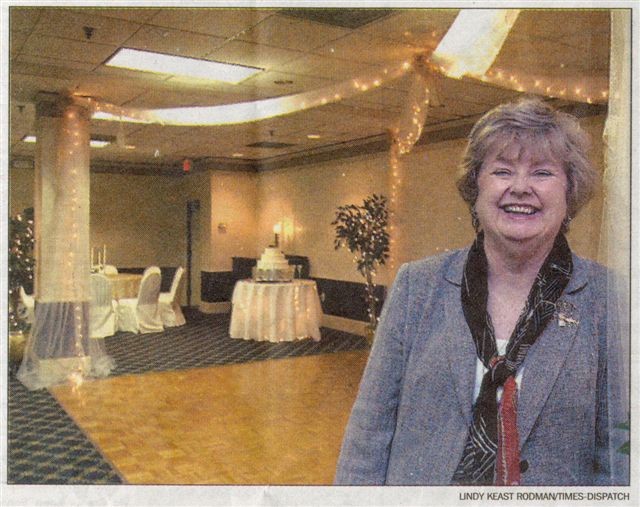
Savory feasts were part of every family celebration when Suzanne
Wolstenholme was growing up in Richmond.
My grandparents lived next door and my grandfather would bring a
steamship round of beef home to celebrate birthdays," Wolstenholme
recalled. "My mom and grandma were both good cooks."
The chairwoman of Homemades by Suzanne remembers how her mother would let
her help in the kitchen.
"The first thing they would let me make was Jell-O. That was when I
was 3 years old," said Wolstenholme, 59. "In that day and age
mothers spent a lot of time in the kitchen. I used to like to be with my
mother so I stayed with her. She would find something for me to do."
Wolstenholme's career in food surfaced in a roundabout way.
An avid tennis player, Wolstenholme would search for something to eat in
Ashland after finishing her game.
"I could get a pizza or a hamburger or fried chicken," she said.
"But there was no where to pick up a sandwich quickly. I thought I could
open a place where you could pick up good food, made from scratch."
Wolstenholme found encouragement in her family but not in the professional
arena. "All the professionals said that I didn't have any experience and
opening a restaurant was difficult for people who did have experience because
one in every five restaurants close within the first year of operation,"
Wolstenholme recalled.
Still determined, Wolstenholme continued with her idea. She bought
equipment at auctions to avoid financial debt and her father bought the
Ashland building that would become the headquarters for Homemades by Suzanne.
"I was terrified that he bought it and we might go out of business in
six months," Wolstenholme said. "I was afraid to open, afraid that
no one would come."
One day as she prepared for the restaurant's opening, Wolstenholme heard a
knock at the door. She could see a pair of slippers through the crack under
the door. The woman wearing them was from the Ashland Garden Club.
"She wanted me to open the restaurant for one Saturday so the judges
from the Daffodil Show would have somewhere to eat," Wolstenholme
recalled. "We opened and they were all so complimentary. It gave me the
courage to open the restaurant to the public."
Wolstenholme began serving lunch -- chicken salad and homemade rolls were
her specialty six days a week. She started the business in 1982 with one table
and chairs.
"Every day we would have to go out and get another table and
chairs," she said. "In a couple of weeks, the room was filled with
tables and chairs."
Wolstenholme soon began the catering arm of her business. "That has
been the part of the business that has really been profitable and grown,"
she said. "We continued to do a lot of boxed lunches at our Ashland
restaurant. We started doing gift baskets with prepared homemade foods about
five years after we opened."
In 1989, Wolstenholme opened her second store on Sixth Street in Richmond's
downtown business district. She opted to relocate 10 years later. That's when
she happened upon the old Engineer's Club -- the building also served as the
Cotton Club at one time.
"We leased the building in 1999 and changed the name to The Colony
Club," Wolstenholme said. "We renovated it and decorated it like it
was when it was The Engineer's Club. This is something we hoped for. Very few
caterers south of Maryland have their own catering facility where they have
events, wedding receptions, fundraisers, etc."
The downtown location, at 10 E. Franklin St., is the hub for Wolstenholme's
boxed-lunch business as well as her catering business. "We do about 400
to 500 boxed lunches a day out of the kitchen," she said.
Wolstenholme caters at least one wedding every Saturday. "We do
full-service catering from here," she said. "We have a large meeting
room downstairs and we would like to do more corporate events."
Sherrie Becker of Becker & Calliott Marketing hires Wolstenholme to
handle a variety of events. "She handles everything from a 30-person
luncheon to a 500-person banquet for us," Becker said. "She
maintains the same quality and freshness for any size event."
Rick Lunsford, floral designer for Blooms at The Jefferson Hotel, also
works with Wolstenholme on events. He is intrigued with her presentations.
"She uses interesting props," he said. "I think she does the
best presentation of anyone in Richmond."
In recent years Wolstenholme has taken on two young partners; both have
worked for her since they were in high school. Sheila Clark serves as the
catering manager and Kim Mills is the Ashland store manager.
"They've worked here so long that they are interchangeable,"
Wolstenholme said. "My husband has also worked with me from the
beginning. He does the early-bird morning duty."
Although a dedicated businesswoman, Wolstenholme, a graduate of Leadership
Metro Richmond, also is civic-minded. She serves as president of the Hanover
Humane Society, which runs the Ashland Theater. She is past president of the
Ashland Chamber of Commerce and a past board member of the Patrick Henry YMCA.
"Suzanne is a tremendous asset to our community," said Cameron
Wood, executive director of the Hanover Association of Businesses and Chamber
of Commerce. "She participates in all types of charitable events,
donating her time and services without hesitation."
Wood sees Wolstenholme as a boon to local business.
"Her business brings so many other people to the downtown Ashland
area. She has been a great attraction from an economic development point of
view."







